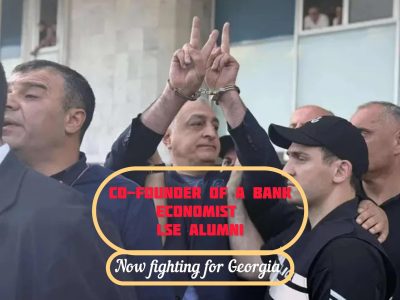By: Karnvir Mundrey
In a world where English, French, and German rake in billions teaching their languages worldwide, India sits on a linguistic jackpot waiting to be cashed. With 22 constitutionally recognized languages and a global diaspora topping 35 million, India’s languages could become a money-spinning machine, a soft-power rocket, and a massive job creator—if only someone had the vision to seize it!
🔥 ENGLISH, FRENCH, GERMAN: THE GIANTS TO BEAT
Consider this: English-learning alone is worth a jaw-dropping $88.9 BILLION this year, on track for $115 billion by 2029. The British Council pockets over £400 million teaching English, and research shows English classes boost trust in the UK government by 16%. That’s not education—it’s pure soft-power gold!
The French have it sussed too. Their Alliance Française empire boasts 800+ centers across 132 countries, pumping out revenue while seducing hearts with the French way of life. And the Germans? Their Goethe-Institut (or Max Mueller Bhawan in India) anchors German as the language of European business, helping stabilize 15+ million global learners—all while filling coffers with tuition fees.
🇮🇳 INDIA: A BILLION SPEAKERS, ZERO PLAN?
India’s 22 official languages—from Hindi and Tamil to Punjabi and Bengali—are spoken by over a billion people at home, yet they’re practically invisible in global language education. Meanwhile, second- and third-generation diaspora kids in America, Britain, and the Gulf are desperate to keep their mother tongues alive—but have nowhere to turn.
Even yoga junkies who’d love to read Sanskrit mantras or Bollywood superfans keen to speak Hindi can’t find a single proper language center outside India. Millions who do business with Indian companies might jump at learning a bit of Hindi or Tamil—but where would they even start?
💰 THE BUSINESS BONANZA
The numbers don’t lie: the Alliance Française serves 500,000 learners every year; the Goethe-Institut teaches over 246,000. Based on their revenue per student, a global Indian language network could rake in $60–150 million a year once it gets rolling.
Just imagine: a modest 200,000 students paying $300 a year would already bring in $60 million annually, before adding certification exams, online subscriptions, or cultural events. And don’t forget Duolingo’s 8.4 million Hindi learners—proof there’s massive untapped demand just waiting for organized courses.
👩🏫 JOBS, JOBS, JOBS
Setting up centers worldwide wouldn’t just fatten wallets; it would also create an army of teachers, admin staff, marketers, and digital platform managers. If 200,000 students sign up, we’d need:
- 1,500–2,000 language teachers at centers and online.
- 300–500 support staff to keep operations humming.
- Thousands more indirectly employed in content, exams, events, and teacher training.
Total? Over 5,000 jobs—many of them perfect for Indian professionals and diaspora members. Teachers could train in India and work abroad; second-generation Indians overseas could teach their heritage language. This isn’t pie in the sky—it’s a plan that’s worked for decades in France and Germany!
🏛️ THE MISSING PIECE: CULTURAL CENTERS
Here’s what makes Alliance Française and Goethe-Institut unstoppable: they’re not boring language schools—they’re vibrant cultural hubs.
Alliance Française offers:
✅ Language classes with certified exams.
✅ Libraries brimming with French novels and films.
✅ Wine tastings, cooking classes, and music nights.
✅ Art exhibitions, film festivals, and kids’ workshops.
Goethe-Institut boasts:
✅ German language courses up to professional fluency.
✅ Cultural programs spanning music, theater, and art.
✅ Lectures on German society, history, and literature.
These centers don’t just teach words—they sell a lifestyle. Students don’t leave after class; they stay for movies, concerts, or chats over coffee. And every minute they spend there deepens their bond with the country.
India? Nowhere to be seen. Even in India itself, if you live in Delhi and want to learn Tamil, or in Mumbai craving Telugu, good luck—there’s no central center offering professional classes, cultural immersion, or certification. And abroad? Forget it. Even motivated students have nowhere to go.
💎 SOFT POWER: THE SECRET SAUCE
Language centers aren’t just businesses—they’re powerful soft-power tools. By teaching English, French, or German, these countries win lifelong fans who:
✅ Study at their universities.
✅ Travel there for tourism.
✅ Do business with their companies.
✅ Consume their media and culture.
Imagine if India had Namaste Bhavans in New York, London, Dubai, Sydney—buzzing with Hindi, Tamil, Punjabi, and Bengali classes, cultural festivals, and Bollywood nights. India’s languages would no longer be second fiddle—they’d be stars on the global stage.
✅ THE PLAN: INDIA’S ROAD TO LANGUAGE DOMINANCE
For India to cash in, it needs to:
🚨 Launch a Central Language Promotion Body—an Indian British Council—under the Ministry of External Affairs or Culture.
🚨 Roll out the big hitters first: Hindi, Tamil, Punjabi, Telugu, Bengali, Gujarati, Marathi.
🚨 Standardize curricula & exams, just like DELF for French or Goethe-Zertifikat for German.
🚨 Train teachers, both in India and among the diaspora, with professional certifications.
🚨 Go digital, building slick online courses and apps for flexible learning.
🚨 Use embassies & ICCR centers as launchpads, and partner with community groups.
🚨 Offer scholarships & exchanges, to bring foreigners to India for immersive study.
🚨 Work with universities abroad, so Indian languages get the same respect as French or German.
🚨 Market Indian languages as a full cultural package, bundling them with yoga, cuisine, dance, cinema, and literature.
🚨 Target corporates, offering courses for foreign executives working with Indian firms.
⚡ WHY NOW?
The stars have aligned:
⭐ The Indian diaspora is exploding, with 35+ million abroad.
⭐ India is the fastest-growing major economy, sparking global interest.
⭐ Online learning has gone mainstream—anyone with a phone can learn a language.
🎯 THE FINAL WORD
India’s 22 official languages could be worth $150 million a year in tuition alone, employ thousands, and turn India’s famed diversity into its greatest global asset.
English, French, and German have already proved language is big business and big diplomacy. India’s time to shine is now—before someone else steals the spotlight.
Our language opportunity is SCREAMING to be let loose!
Karnvir Mundrey is founder of Atharva Marcom. He can be reached at kmundrey@gmail.com














Comments